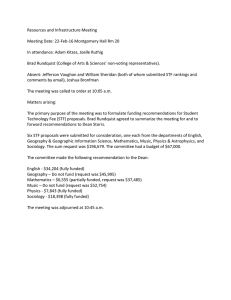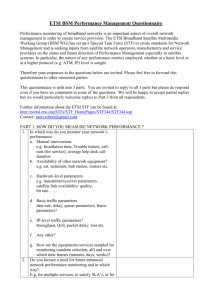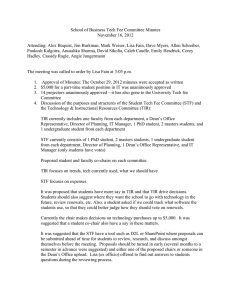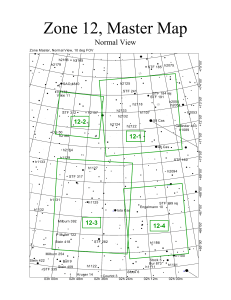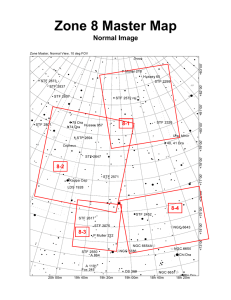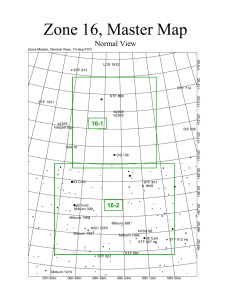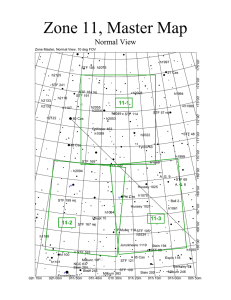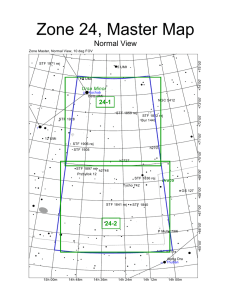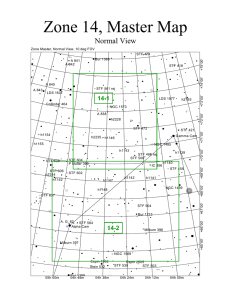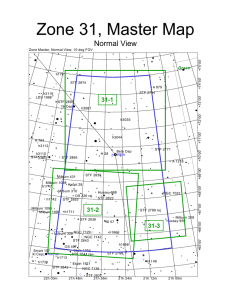Design for All users’ Tel- Shaping the end- e
advertisement
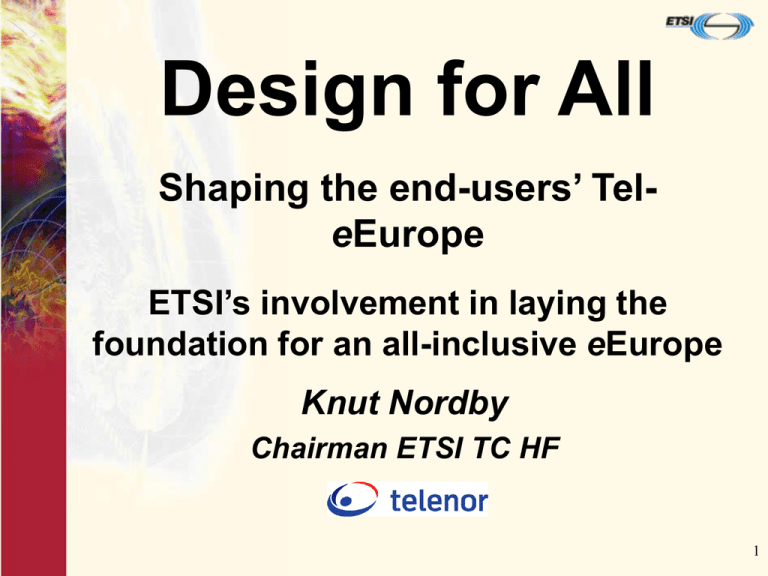
Design for All Shaping the end-users’ TeleEurope ETSI’s involvement in laying the foundation for an all-inclusive eEurope Knut Nordby Chairman ETSI TC HF 1 Design for whom? 2 The e-Society ICT (Information & Communication Technology) is permeating nearly every aspect of modern life as more and more daily activities must be performed electronically; e-mail, ebanking, e-commerce, e-health, eeducation, e-voting, etc. – we are moving fast towards an e-Society. 3 Access to the e-Society An e-Society presupposes that all citizens actually can access the new electronic services; mobile phones, PCs, PDAs, Internet, etc. However, this is certainly not the case, and new technologies will actually exclude large user groups, especially children, disabled and older people, from participating fully in the society. 4 The ’Swiss Army-Knife syndrome’ 5 ’Handicapped’ by the eSociety In many areas there are no alternatives when local bank branch offices close, local shops disappear, and essential societal services are computerised. Many people, especially older and disabled persons, will therefore be virtually handicapped, both at work and in their leisure time. 6 The conspiracy against human memory 7 The usability pyramid Human abilities Poor Good Personal assistance Assistive technology With adaptation Those who can use all 8 Inclusive design Human abilities Poor Good Personal assistance Assistive technology With adaptation Inclusive design Those who can use all 9 Human Factors Human Factors is scientifically based knowledge about human capabilities and limitations, with the aim to make products services and environments more efficient, safer and easier-touse. Human Factors is thus a key factor for the commercial success of new ICT products and services. 10 Why standards? 11 We need standards to ensure: Compatibility of products from different suppliers, Interoperability between products from different suppliers, Transfer of learning between products from different suppliers, Better accessibility to products, Increased safety of products. 12 We need standards for: Legislation; standards are needed by legislators to improve accessibility for all citizens, Regulation; standards are needed by regulators for granting operating licences, Procurement; standards are needed in public calls for tenders to specify good accessibility, 13 ETSI TC HF TC HF = Technical Committee Human Factors. TC HF creates Standards, Guides and Reports based on the best Human Factors practice. TC HF takes into account the needs of all, including young, old & disabled people. 14 eEurope Action Plan 2002 To improve e-accessibility, as one of several issues, the CEC funded the eEurope Action Plan 2002: 5 M€ in 2000, 5 M€ in 2001 and 2.5 M€ in 2002 The European standards organisations CEN, CENELEC and ETSI were invited to apply for funding for standardisation work. ETSI HF received funding of 13 Specialist Task Forces (STFs): five in 2000, six in 2001 and two in 2002. 15 Specialist Task Forces 2000 STF 180 Universal Communications Identifier (UCI); System framework STF 181 Requirements for Assistive Technology devices in ICT STF 182 Generic spoken command vocabulary for ICT devices and services. STF 183 Guidelines on the multimodality of icons, symbols and pictograms STF 184 Guidelines for ICT products and services: ‘Design for All’ 16 Specialist Task Forces 2001 STF 199 A unified identification scheme for Next Generation Networks (NGN) when implemented with UCI. STF 200 Maximising the usability of UCI based systems STF 201 Access to ICT by young people; Issues and recommendations 17 Specialist Task Forces 2001 STF 202 Character repertoires, ordering rules and assignment to the 12-key telephone keypad (European languages) STF 203 Human Factors of work in Call Centres STF 204 Multimodal interaction, communication and navigation 18 Specialist Task Forces 2002 STF 230 Using UCI systems to improve communications for disabled, young and old people STF 231 Generic User Interface elements of mobile telecommunication devices and services 19 Publications 2002 ES 202 076 Generic spoken command vocabulary for ICT devices and services. EG 202 116 Guidelines for ICT products and services: ‘Design for All’ EG 202 048 Guidelines on the multimodality of icons, symbols and pictograms EG 202 067 Universal Communications Identifier (UCI); System framework 20 Publications 2002 EG 202 072 Placing UCI in context: Review and analysis of existing identification schemes TR 102 125 Potential harmonised UI elements for mobile terminals and services TR 102 068 Requirements for Assistive Technology devices in ICT TR 102 077 Maximising the usability of UCI based systems 21 Publications 2003 EG 202 191 Multimodal interaction, communication and navigation TR 102 133 Access to ICT by young people: Issues and recommendations TR 102 202 Human Factors of work in Call Centres 22
